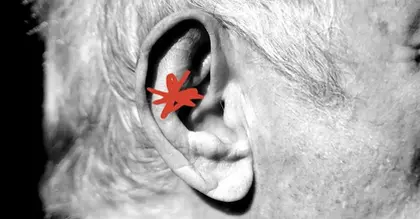
- About 60% of daily caloric intake for Americans comes from consuming ultra-processed foods.
- Past research has linked eating high amounts of ultra-processed foods to an increased risk for several negative health issues.
- Researchers at University College London further suggest that people who eat more ultra-processed foods may be at increased risk of developing type 2 diabetes.
- Scientists also observed that a person may be able to reduce their type 2 diabetes risk by replacing ultra-processed with less processed foods in their diet.
About 60% of daily caloric intake for North Americans comes from
Research published in March 2024 linked eating larger amounts of ultra-processed foods to a greater risk of
Now, a new study by researchers at University College London in the United Kingdom, in collaboration with other experts, provides additional evidence that people who eat more ultra-processed foods are at increased risk of developing type 2 diabetes.
However, the study also observed that this risk may be lowered by replacing ultra-processed foods with less processed foods in a person’s diet.
The findings were recently published in the journal
For this study, researchers analyzed ultra-processed foods intake and health outcomes for almost 312,000 people from eight European countries.
“Ultra-processed foods are typically made from combining many ingredients that have undergone lots of industrial processing,” Samuel Dicken, BA Hons (Cantab.), MSc, clinical scientist and doctoral researcher at the Centre for Obesity Research in the Division of Medicine at University College London, and lead of this study explained to Medical News Today.
“They often use ingredients that you wouldn’t cook with at home, such as
The problem, he continued, is that:
“Ultra-processed foods are everywhere, they’re highly accessible, cheap, convenient, and heavily marketed. Examples include
sugary drinks , ready meals, savory snacks (such as crisps), breakfast cereals, and plant-based alternatives. They can often be identified by a long list of ingredients on the package, with lots of colorful branding, and some of them with nutrition/health claims such as low in fat or high in fiber.”
Study participants were followed for 10.9 years on average, with about 14,000 developing type 2 diabetes during that time.
At the study’s conclusion, Dicken and his team found that every 10% increase of ultra-processed foods in a person’s diet was associated with a 17% higher risk for developing type 2 diabetes.
Additionally, they found that replacing ultra-processed food with less processed foods was associated with a lower rate of type 2 diabetes in the study population.
They found that substituting 10% of ultra-processed foods in a person’s diet with 10% of
“What was significant/important about our study was we […] did what previous studies haven’t done, but needs to be done to better understand ultra-processed foods and whether we should regulate them all,” Dicken said.
“We considered the risks associated with other food processing groups — minimally processed foods, processed culinary ingredients, or processed foods — whether the ultra-processed foods risk differs across ultra-processed foods sub-groups, and the association with replacing one processing food group with another. These analyses have largely not been done to date,” he pointed out.
“The key conclusion from this, is that generally consuming a less processed diet is a good idea for reducing our risk of type 2 diabetes,” Dicken continued. “Our Healthy diet guidance is still important, such as the Eatwell Guide in the U.K., and the U.S. MyPlate. This should still be our general focus. However, generally consuming a less processed diet, particularly avoiding sugary drinks, and savory snacks is also a good idea for reducing our risk of type 2 diabetes.”
After reviewing this study, Noa Tal, MD, a board certified-endocrinologist, of the Pituitary Disorders Center at Pacific Neuroscience Institute in Santa Monica, CA, told MNT she was not surprised by its findings.
“The results are consistent with existing research that highlights the significant impact of ultra-processed foods on metabolic, cardiac, and neurological health,” Tal explained. “It’s encouraging to see that the risk associated with ultra-processed foods can be reduced by substituting them with less-processed foods.”
“As physicians, we must remember that effective care often starts at home — specifically in the kitchen,” she continued.
She believes there are several important avenues for further investigation, including similar studies conducted in diverse populations beyond Europe and having a better understanding of the mechanisms by which ultra-processed foods contribute to weight gain and type 2 diabetes.
“It’s possible that certain ultra-processed foods affect the microbiome differently or interact with the
“Understanding these mechanisms could help identify which components of ultra-processed foods are most detrimental and how they influence health outcomes, ultimately guiding more effective strategies to mitigate their negative effects,” said Tal
MNT also spoke with Monique Richard, MS, RDN, LDN, a registered dietitian nutritionist and owner of Nutrition-In-Sight, about this study.
For those looking to lower their intake of ultra-processed foods, Richard said one of the first priorities would be to first understand why they are being consumed:
“There are a variety of reasons ultra-processed foods may be incorporated in someone’s diet including convenience, financial or accessibility limitations, availability or distribution of what is offered outside the person’s choice — in a school, work or childcare setting for example — or due to a preference or affinity; for example, children on the autism spectrum or with a sensory disorder may only eat ultra-processed foods.”
Once you recognize why ultra-processed foods are in your diet, Richard said to observe you and your family’s dietary pattern by monitoring:
- how often you are consuming fruits or vegetables in their own skin
- how often your meals and snacks come in packaging listing 15–20 ingredients that are not food items themselves
- how frequently you are consuming meals or snacks from a fast-food drive-through
- how often you consume foods that are plant-based versus manufactured in a plant
- how often you put a meal together — for example, baked a protein, heated a starch, sauteed a plant — or made a meal, snack, or dessert from a recipe with whole food sources as the ingredients.
“Looking at your grocery cart, your trash bin, and your food receipts can provide a lot of insight as to where your nourishment is coming from as well as a peak into the level of quality,” Richard added. “It is also an opportunity for catapulting change.”
She also offered some general tips to help cut down on ultra-processed foods in your diet:
- learn culinary skills if you do not know how to cook
- pack your own breakfast and lunch as often as possible
- learn what foods are considered ultra-processed foods and why
- understand your health risks and how these foods may not be serving your body’s needs
- fill your plate with fiber-rich foods and healthy fats that will keep you fuller for longer
- eat foods that take a while to chew — such as salads, whole grains, whole fruits, vegetables, nuts in their shell — as this can help improve the ways in which the nutrients are metabolized (absorbed into the body)
- swaps ultra-processed foods such as cereal for old-fashioned oats with nuts, seeds, and fruit
- take a pass on the orange-powdered “cheese” puffs and opt for a natural snack, such as an orange, instead.





